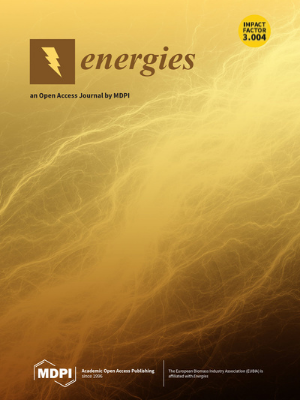模糊神经网络在燃烧过程诊断中的应用
IF 3.2
4区 工程技术
Q3 ENERGY & FUELS
引用次数: 0
摘要
煤炭仍然是能源工业用于发电和供热的主要原材料之一。因此,燃烧过程的诊断仍然是科学研究的一个重要课题。正确实施燃烧过程可以将排放到大气中的污染物控制在符合要求的水平。因此,以不超过这些标准的方式进行燃烧过程非常重要。对测量信号进行了初步分析,并使用自回归移动平均(ARMA)模型确定了火焰强度变化的信号预测。研究了不同的模糊神经网络架构。对火焰状态进行了二分类和多分类。ANFIS_grid 分区模型的结果最好,二元分类的准确率为 95.46%,多类分类的准确率为 79.08%。火焰状态识别的准确性以及所确定的预测值与测量信号的高度收敛性验证了所提出的方法在诊断或控制煤粉及其与生物质混合物的燃烧过程中的应用。专家决定可接受状态的范围。本文章由计算机程序翻译,如有差异,请以英文原文为准。
Application of Fuzzy Neural Networks in Combustion Process Diagnostics
Coal remains one of the key raw materials used in the energy industry to generate electricity and heat. As a result, diagnostics of the combustion process is still an important topic of scientific research. Correct implementation of the process allows the emission of pollutants into the atmosphere to be kept at a compliant level. Therefore, it is important to conduct the process in a manner that will not exceed these standards. A preliminary analysis of the measurement signals was carried out, and signal predictions of flame intensity changes were determined using the autoregressive moving average (ARMA) model. Different fuzzy neural network architectures have been investigated. Binary and multi-class classifications of flame states were conducted. The best results were obtained from the ANFIS_grid partition model, producing an accuracy of 95.46% for binary classification and 79.08% for multi-class classification. The accuracy of the recognition of flame states and the high convergence of the determined predictions with measurement signals validate the application of the proposed approach in diagnosing or controlling the combustion process of pulverized coal and its mixtures with biomass. Expert decisions determine the range of acceptable states.
求助全文
通过发布文献求助,成功后即可免费获取论文全文。
去求助
来源期刊

Energies
ENERGY & FUELS-
CiteScore
6.20
自引率
21.90%
发文量
8045
审稿时长
1.9 months
期刊介绍:
Energies (ISSN 1996-1073) is an open access journal of related scientific research, technology development and policy and management studies. It publishes reviews, regular research papers, and communications. Our aim is to encourage scientists to publish their experimental and theoretical results in as much detail as possible. There is no restriction on the length of the papers. The full experimental details must be provided so that the results can be reproduced.
 求助内容:
求助内容: 应助结果提醒方式:
应助结果提醒方式:


